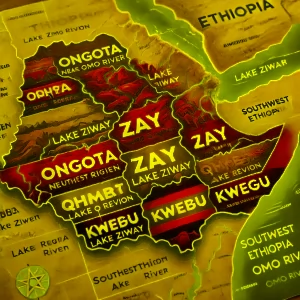Ethiopia’s Linguistic Treasure Trove: The Hidden Languages at Risk
Introduction

Ethiopia stands as one of the most linguistically diverse nations in Africa, boasting over 80 languages. From Semitic languages like Amharic to Cushitic and Omotic dialects, this rich heritage reflects the country’s multicultural history. Yet, many of these languages face the threat of extinction. Today, we highlight a pressing question: What do we lose when a language vanishes?
The Languages at Risk
Out of Ethiopia’s linguistic landscape, several languages are critically endangered:
- Ongota (Birale): Spoken by fewer than 10 elders near the Omo River, this language is nearly extinct as younger generations adopt Ts’amakko.
- Shabo (Mikeyir): A linguistic isolate with fewer than 300 speakers, it offers insight into ancient migration patterns in East Africa.
- Zay: Fewer than 5,000 speakers remain on Lake Ziway’s islands, as dominant languages like Oromo and Amharic take precedence.
These examples underscore the fragility of Ethiopia’s linguistic heritage.
Why Do Languages Disappear?
Several factors contribute to language endangerment in Ethiopia:
- Dominance of Major Languages: Government policies and social integration have prioritized languages like Amharic, pushing smaller ones to the margins.
- Migration and Urbanization: Speakers of minority languages often migrate to cities where dominant languages are more practical.
- Lack of Documentation: Oral traditions are easily lost without written records or linguistic research.
- Intergenerational Gaps: Younger generations often see no economic value in learning their ancestral tongue.
What’s at Stake?
The disappearance of a language doesn’t just mean losing words—it means losing unique perspectives, traditions, and histories. For example:
- Qimant: This language preserves the oral history of the Qimant people and their religious practices.
- Kwegu: Its vocabulary reflects the close relationship between the Kwegu community and the Omo River, documenting their environmental adaptation.
Preservation is Possible
While the challenges are immense, efforts are underway to safeguard these languages. Linguists are creating dictionaries, recording native speakers, and even using technology to preserve endangered tongues. Community involvement, such as passing down stories and songs, is also key to revival.
Conclusion
Every endangered language in Ethiopia carries a piece of humanity’s story. By understanding and preserving these languages, we not only honor the past but also ensure a richer, more diverse future. The question remains: What role will we play in this effort?
